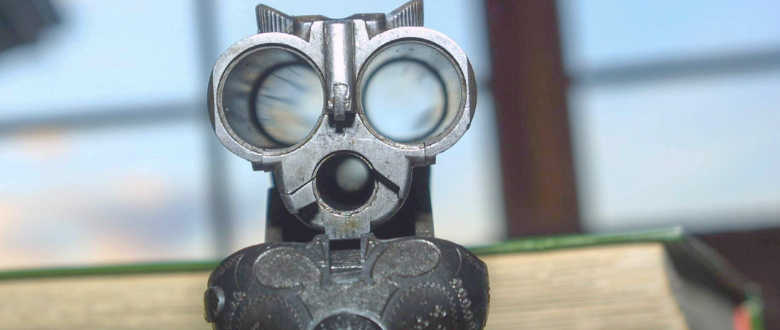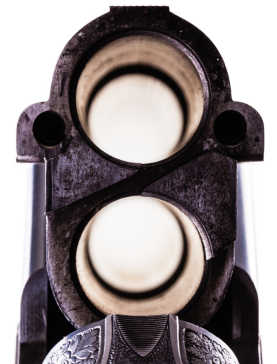
The shotgun is a popular firearm used for various purposes, from hunting to self-defense. However, like any mechanical device, shotguns can fail, and in some cases, even explode. Understanding the causes of shotgun failures is crucial for the safety of users and the prevention of accidents.
In this article, we will discuss the various factors that can contribute to shotgun explosions, including ammunition issues, manufacturer defects, and poor maintenance practices. By identifying the warning signs of a failing shotgun, gun owners can take the necessary precautions to protect themselves and others.
What might cause a shotgun to explode?
A shotgun is designed to withstand the immense pressure generated by the firing of a shell. However, several factors can cause this pressure to exceed the gun’s structural limits, resulting in catastrophic failures. One common cause is the use of improper ammunition. Shotguns are chambered for specific gauges, such as 12-gauge, 20-gauge, or .410 bore, and using the wrong gauge can lead to excessive pressure buildup. Similarly, using hand-loaded ammunition with improper powder charges or wads can also result in dangerous pressure spikes.
Improper ammunition
When a shotgun is loaded with ammunition that is not designed for its specific gauge, the consequences can be severe. The shotgun’s chamber is carefully engineered to accommodate a particular shell size, and any deviation from this can lead to a mismatch between the ammunition and the gun’s internal dimensions. This mismatch can cause the pressure generated upon firing to skyrocket, pushing the gun beyond its limits and resulting in an explosion.
Hand-loaded ammunition
Furthermore, the use of hand-loaded ammunition, also known as reloads, can introduce additional risks. While many experienced shooters safely reload their own ammunition, it requires meticulous attention to detail. If the powder charge is incorrect or the wad is not properly seated, the pressure generated during firing can quickly reach dangerous levels. This underscores the importance of following established reloading guidelines and ensuring that each round is carefully inspected before use.
Barrel obstructions
Another factor that can contribute to shotgun explosions is the presence of barrel obstructions. While it may seem unlikely, even the smallest foreign object can have disastrous consequences. Imagine a scenario where a shooter accidentally leaves a cleaning patch inside the barrel after maintenance. Unaware of this obstruction, they load and fire a shell. As the shot travels down the barrel, it encounters the cleaning patch, causing the pressure to rapidly increase. The barrel, unable to withstand this excessive force, may rupture, resulting in a catastrophic failure.
It’s not just cleaning patches that can cause barrel obstructions. Bore snakes, commonly used for quick cleaning, can also become lodged in the barrel if not properly removed before firing. Additionally, a stray birdshot pellet that remains stuck in the barrel can obstruct the path of the fired shot, leading to a similar increase in pressure. These seemingly innocuous objects can turn a routine shooting session into a dangerous situation if not addressed before firing the next round.
Understanding the potential causes of shotgun explosions is crucial for firearm safety. By using the correct ammunition for your shotgun’s gauge, following established reloading guidelines, and ensuring that the barrel is clear of any obstructions, you can greatly reduce the risk of catastrophic failures. Remember, safety should always be the top priority when handling firearms.
SUMMARY
Barrel obstructions are the leading cause of shotgun failures. Something as simple as mud in the barrel from careless handling can cause the barrel to explode outward.
Examining the Role of Ammunition in Shotgun Explosions
Ammunition plays a crucial role in the safe operation of shotguns. However, issues with ammunition quality or compatibility can lead to catastrophic failures. For instance, using old or deteriorated shells can result in unpredictable pressure variations, increasing the risk of an explosion. It is essential to inspect and properly store ammunition to ensure its reliability and prevent accidents.
Quality Control
When it comes to ammunition, one cannot underestimate the importance of quality control. Manufacturers must adhere to strict standards to ensure that each shell is loaded with the correct amount of powder and properly seated primer. However, even with these precautions in place, there can still be instances where ammunition quality falls short.
Ammo Storage
One factor that can affect ammunition quality is the storage conditions. Ammunition should be stored in a cool, dry place to prevent degradation. Exposure to moisture or extreme temperatures can cause the components of the shell to deteriorate, compromising its integrity. Additionally, ammunition should be kept away from flammable materials to minimize the risk of accidental ignition.
Attention to detail
Furthermore, using hand-loaded ammunition without proper knowledge and attention to detail can be a recipe for disaster. While some hunters enjoy the process of reloading their own ammunition, it is crucial to understand the potential risks involved. Incorrect powder charges, improper primers, or poorly crimped shells can all contribute to excessive pressure and ultimately cause a shotgun to explode.
Reloading ammunition requires meticulous precision and adherence to established procedures. Each component must be carefully measured and inspected to ensure that it meets the necessary specifications. Any deviation from the recommended guidelines can have dire consequences. Therefore, it is essential for individuals who choose to reload their own ammunition to educate themselves thoroughly and seek guidance from experienced reloaders.
Moreover, it is crucial to exercise caution when handling ammunition, regardless of whether it is factory-loaded or hand-loaded. Accidental mishandling, such as dropping or striking the shell against a hard surface, can cause damage to the primer or the casing, leading to potential failures during firing. It is important to handle ammunition with care, always keeping in mind the potential dangers it poses.

Manufacturer Defects: A Leading Cause of Shotgun Failures
Shotguns have long been regarded as reliable firearms, capable of withstanding the rigors of hunting, sport shooting, and self-defense. However, even the most well-built shotguns can be susceptible to manufacturing defects that, if left undetected, can lead to catastrophic failures over time.
Heat-treated barrels
One of the most common manufacturing defects found in shotguns is improperly heat-treated barrels. Heat treatment is a critical process that strengthens the metal and ensures its durability. When this process is not executed correctly, the barrel can become weak and prone to failure, posing a significant risk to the shooter and those nearby.
Brittle components
In addition to heat treatment issues, weak or brittle components can also contribute to shotgun failures. These components, such as firing pins, extractors, and ejectors, are essential for the proper functioning of the firearm. However, if they are not manufactured to the highest standards, they can break or malfunction, rendering the shotgun inoperable or even dangerous.
Routine inspection
Another factor that can contribute to shotgun failures is inadequate quality control during the manufacturing process. Quality control measures are crucial for identifying and rectifying any defects or inconsistencies in the production line. Without rigorous quality control, shotguns may leave the factory with hidden defects that can go unnoticed until it’s too late.
Given the potential risks associated with manufacturing defects, it is imperative for gun owners to regularly inspect their shotguns for any signs of defects. This includes checking for visible cracks, dents, or other abnormalities in the barrel and other critical components. Additionally, paying attention to any changes in the shotgun’s performance, such as misfires or jams, can also indicate the presence of a defect.
Manufacturer recalls
Furthermore, staying informed about any recalls or safety notices issued by the shotgun manufacturer is crucial. Manufacturers are legally obligated to inform customers about any known defects or safety concerns. By keeping up-to-date with these notifications, gun owners can take the necessary steps to address any potential issues and ensure the overall safety of their firearms.
Ultimately, while shotguns are generally reliable firearms, the presence of manufacturing defects can pose significant risks. By being vigilant and proactive in inspecting and addressing any potential defects, gun owners can mitigate the chances of shotgun failures and ensure the safety of themselves and others.
How Poor Maintenance Contributes to Shotgun Explosions
Proper maintenance is essential for any firearm, including shotguns. Neglecting routine cleaning, lubrication, and inspection can increase the likelihood of failure and potential explosions. Over time, debris, corrosion, or fouling can accumulate in the shotgun’s bore, chamber, choke tube, or action, affecting the overall function and safety of the firearm.
Moreover, worn-out or damaged components, if left unaddressed, can contribute to excessive pressure and ultimately cause a shotgun to explode. It is vital for gun owners to establish a regular maintenance routine, following the manufacturer’s guidelines, to ensure the reliability and safety of their shotguns.

Identifying Warning Signs of a Failing Shotgun
Recognizing the warning signs of a failing shotgun is crucial for preventing accidents and ensuring the safety of users. One common indicator is excessive recoil or a noticeable increase in recoil over time, which may indicate underlying issues with the gun’s integrity. Additionally, any visible cracks, bulges, or deformities in the barrel or action should not be ignored, as they could be indications of impending failure.
Unusual sounds or sensations during firing, such as a louder than normal report or excessive vibrations, can also point to potential problems. Any sudden changes in accuracy or patterns of shot dispersion should not be dismissed, as they can be associated with compromised barrel integrity or other issues in the firearm’s functioning. It is essential to address these warning signs promptly and seek professional assistance, if necessary, to prevent accidents and ensure the continued safe operation of the shotgun.
Shotguns are powerful and versatile firearms, but they are not immune to failure. Understanding the causes of shotgun explosions is essential for gun owners to take the necessary precautions and protect themselves and others. By using appropriate ammunition, addressing manufacturer defects, practicing proper maintenance, and recognizing warning signs, gun owners can mitigate the risks associated with shotgun failures and ensure a safe shooting experience.
Was this helpful?
Search Chokes by Gauge
Latest Posts



